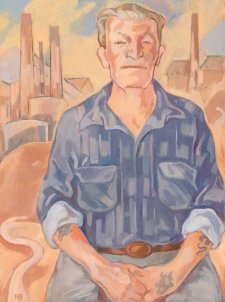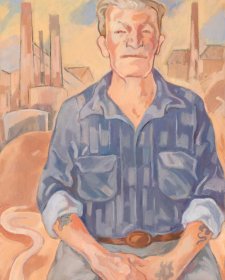Nancy Borlase (1914-2006), artist, was born in New Zealand, and had to be dug out of the wreckage when an earthquake struck Napier in late 1931. In Christchurch, she began art lessons and worked as a fortune teller to make a living; to raise the fare to Sydney, where she wanted to study art, she made paper lampshades. Arriving in the city in 1937, she studied sculpture at East Sydney Technical College, modelling for artists to pay her rent, but soon turned to painting. In Melbourne, she co-led an artists’ models’ strike for better pay and conditions. Having married unionist Laurie Short, she worked as a cleaner and waitress at the Trocadero in Sydney. A trip to the USA with Short in 1956 enabled her to see the work of Pollock, de Kooning and Rothko, and on her return to Sydney she painted many vibrant abstracts. One of these was acquired by the Art Gallery of New South Wales in 1960, the year of her first solo exhibition at Macquarie Galleries. In 1988 the same gallery purchased a self-portrait she had painted in 1943; in 1994, she received a substantial ‘meritus award’ from the Australia Council. Portraits she painted in the 1990s, subjects of which included the socialist activist Issy Wyner and the seaman Pat Mackie, were characteristically flat and graphic, almost cartoonish in style. She finally took out the Portia Geach Memorial award with just such a work, a double portrait of Sydney sisters, Vida (1920-1996) and Marie (1920-1996) Breckenridge, who were both artists and researchers; Marie was also a pilot. Borlase said of her life as a painter, ‘It has been a long, slow haul, but I got there.’
Gift of Marie Breckenridge 2004
© Estate of Nancy Borlase
Marie Breckenridge (1 portrait)



On one level The Companion talks about the most famous and frontline Australians, but on another it tells us about ourselves.



Dr Sarah Engledow delves into the life of union leader Pat Mackie who is depicted in a portrait by Nancy Borlase AM.



Visit us, learn with us, support us or work with us! Here’s a range of information about planning your visit, our history and more!